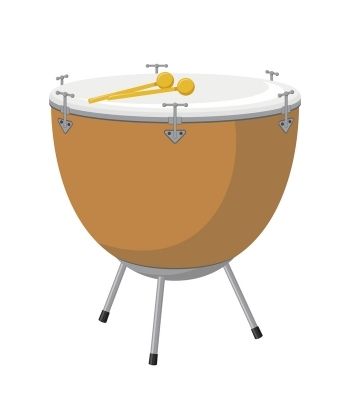Timpani

Family
Percussion
Description
With a name that means, “the hitting of one body against another,” instruments in the percussion family are played by being struck, shaken, or scraped. In the orchestra, the percussion section provides a variety of rhythms, textures and tone colors. Percussion instruments are classified as tuned or untuned. Tuned instruments play specific pitches or notes, just like the woodwind, brass and string instruments. Untuned instruments produce a sound with an indefinite pitch, like the sound of a hand knocking on a door. The percussion instruments are an international family, with ancestors from the Middle East, Asia, Africa, the Americas and Europe, representing musical styles from many different cultures.
Timpani, also called kettledrums, were the first drums to be used in the orchestra over 300 years ago. They are constructed of a large copper bowl with a drumhead made of calfskin or plastic stretched across the top. When struck with felt-tipped wooden sticks, or mallets, timpani produce a specific pitch that is determined by the drum’s size. That pitch is fine-tuned by tightening the drumhead with keys and foot pedals. Most orchestras use three or four timpani of varying sizes.